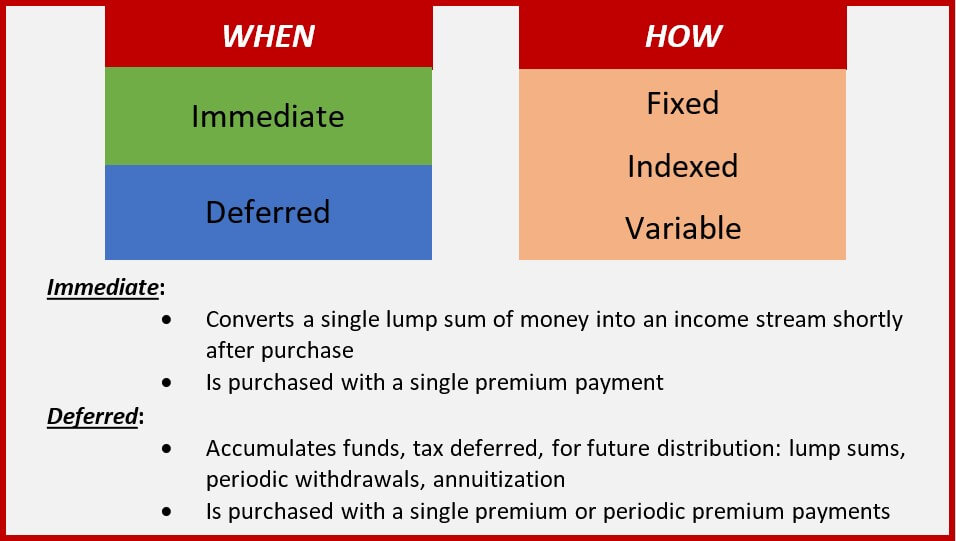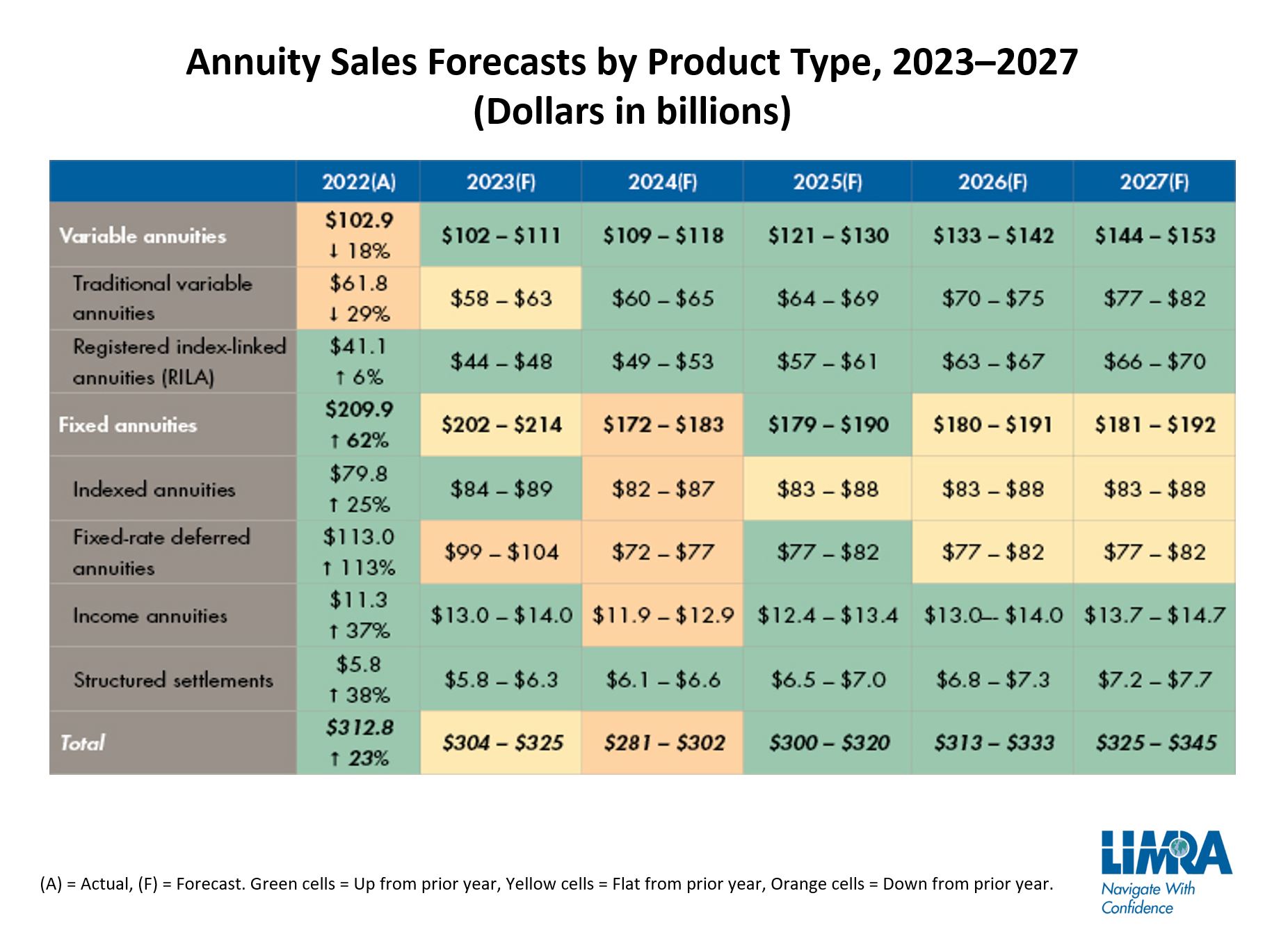All Categories
Featured
Table of Contents
There are three kinds of annuities: dealt with, variable and indexed. With a repaired annuity, the insurance firm ensures both the price of return (the interest price) and the payout to the capitalist.
With a deferred fixed annuity, the insurer accepts pay you no less than a specified interest rate as your account is growing. With an immediate set annuityor when you "annuitize" your postponed annuityyou get a predetermined set amount of money, usually on a month-to-month basis (comparable to a pension).
While a variable annuity has the advantage of tax-deferred development, its annual expenses are most likely to be a lot greater than the expenditures of a typical shared fund. And, unlike a repaired annuity, variable annuities don't give any kind of assurance that you'll earn a return on your financial investment. Instead, there's a danger that you could actually shed money.
Analyzing Strategic Retirement Planning A Closer Look at Annuities Variable Vs Fixed Breaking Down the Basics of What Is Variable Annuity Vs Fixed Annuity Pros and Cons of Fixed Vs Variable Annuity Why Fixed Vs Variable Annuity Pros Cons Is a Smart Choice Fixed Vs Variable Annuity Pros Cons: Explained in Detail Key Differences Between Different Financial Strategies Understanding the Key Features of Long-Term Investments Who Should Consider Strategic Financial Planning? Tips for Choosing Pros And Cons Of Fixed Annuity And Variable Annuity FAQs About Planning Your Financial Future Common Mistakes to Avoid When Planning Your Retirement Financial Planning Simplified: Understanding Your Options A Beginner’s Guide to Smart Investment Decisions A Closer Look at Fixed Vs Variable Annuity Pros And Cons
Due to the intricacy of variable annuities, they're a leading source of capitalist problems to FINRA. Prior to acquiring a variable annuity, meticulously read the annuity's program, and ask the person marketing the annuity to clarify all of the product's functions, bikers, costs and constraints. You need to additionally know just how your broker is being made up, consisting of whether they're receiving a compensation and, if so, exactly how much.
Indexed annuities are complex financial tools that have attributes of both dealt with and variable annuities. Indexed annuities commonly provide a minimal guaranteed interest rate integrated with a rate of interest price connected to a market index. Many indexed annuities are linked to wide, well-known indexes like the S&P 500 Index. Yet some usage various other indexes, consisting of those that stand for other sectors of the market.
Recognizing the features of an indexed annuity can be complicated. There are a number of indexing techniques firms make use of to determine gains and, due to the variety and complexity of the approaches utilized to credit scores passion, it's challenging to contrast one indexed annuity to another. Indexed annuities are typically classified as one of the adhering to two types: EIAs supply an assured minimum rate of interest (usually a minimum of 87.5 percent of the costs paid at 1 to 3 percent rate of interest), as well as an extra passion rate linked to the performance of one or more market index.

With variable annuities, you can invest in a variety of securities consisting of stock and bond funds. Supply market performance establishes the annuity's value and the return you will obtain from the money you invest.
Comfy with variations in the stock market and want your investments to keep rate with rising cost of living over a lengthy period of time. Young and desire to prepare financially for retirement by gaining the gains in the stock or bond market over the lengthy term.
As you're developing your retirement financial savings, there are numerous methods to extend your money. can be particularly helpful cost savings tools due to the fact that they guarantee a revenue quantity for either a collection time period or for the rest of your life. Taken care of and variable annuities are 2 choices that use tax-deferred growth on your contributionsthough they do it in different ways.
Exploring Deferred Annuity Vs Variable Annuity A Closer Look at Annuities Variable Vs Fixed What Is the Best Retirement Option? Features of Fixed Vs Variable Annuity Pros And Cons Why Indexed Annuity Vs Fixed Annuity Is a Smart Choice Variable Annuity Vs Fixed Annuity: How It Works Key Differences Between Different Financial Strategies Understanding the Key Features of Fixed Income Annuity Vs Variable Annuity Who Should Consider Strategic Financial Planning? Tips for Choosing the Best Investment Strategy FAQs About Planning Your Financial Future Common Mistakes to Avoid When Choosing a Financial Strategy Financial Planning Simplified: Understanding Your Options A Beginner’s Guide to Smart Investment Decisions A Closer Look at Variable Vs Fixed Annuities
variable annuity or both as you plot out your retirement income plan. An offers a guaranteed passion rate. It's thought about a conservative item, supplying a small earnings that are not tied to market efficiency. Your agreement worth will certainly boost because of the accrual of guaranteed passion profits, meaning it won't shed value if the market experiences losses.
A consists of purchased the supply market. Your variable annuity's investment performance will affect the size of your nest egg. It may assure you'll get a collection of payouts that begin when you retire and can last the rest of your life, provided you annuitize (start taking settlements). When you start taking annuity settlements, they will rely on the annuity worth back then.
Market losses likely will lead to smaller payments. Any passion or various other gains in either sort of contract are protected from current-year taxation; your tax responsibility will come when withdrawals start. Let's take a look at the core functions of these annuities so you can decide how one or both might fit with your total retired life strategy.

A set annuity's worth will not decrease due to market lossesit's constant and steady. On the other hand, variable annuity values will fluctuate with the performance of the subaccounts you elect as the markets fluctuate. Revenues on your fixed annuity will extremely depend upon its contracted price when purchased.
On the other hand, payment on a fixed annuity purchased when rate of interest rates are reduced are more likely to pay out incomes at a reduced rate. If the rate of interest is assured for the length of the contract, incomes will remain constant no matter the markets or rate task. A fixed price does not imply that repaired annuities are risk-free.
While you can not come down on a set price with a variable annuity, you can select to buy conventional or hostile funds customized to your threat level. Much more traditional investment options, such as temporary bond funds, can help in reducing volatility in your account. Considering that dealt with annuities supply an established price, reliant upon current rate of interest prices, they do not use that very same adaptability.
Breaking Down Your Investment Choices A Comprehensive Guide to Fixed Annuity Vs Equity-linked Variable Annuity Breaking Down the Basics of What Is Variable Annuity Vs Fixed Annuity Pros and Cons of Variable Annuity Vs Fixed Indexed Annuity Why Variable Annuity Vs Fixed Indexed Annuity Is Worth Considering How to Compare Different Investment Plans: A Complete Overview Key Differences Between Fixed Annuity Vs Variable Annuity Understanding the Risks of Long-Term Investments Who Should Consider Fixed Income Annuity Vs Variable Growth Annuity? Tips for Choosing the Best Investment Strategy FAQs About Planning Your Financial Future Common Mistakes to Avoid When Choosing a Financial Strategy Financial Planning Simplified: Understanding Your Options A Beginner’s Guide to Smart Investment Decisions A Closer Look at How to Build a Retirement Plan
:max_bytes(150000):strip_icc()/dotdash-life-insurance-vs-annuity-Final-dad081669ace474982afc4fcfcd27f0a.jpg)
You potentially could gain more long term by taking added danger with a variable annuity, yet you might likewise shed cash. While dealt with annuity agreements prevent market danger, their compromise is less development capacity.
Investing your variable annuity in equity funds will offer more potential for gains. The costs connected with variable annuities may be higher than for various other annuities.
The insurance coverage business may enforce abandonment costs, and the IRS may levy a very early withdrawal tax obligation charge. They begin at a specific portion and after that decrease over time.
Annuity incomes undergo a 10% very early withdrawal tax charge if taken before you get to age 59 unless an exception applies. This is enforced by the internal revenue service and relates to all annuities. Both taken care of and variable annuities supply choices for annuitizing your balance and turning it into a guaranteed stream of life time income.
Analyzing Strategic Retirement Planning Everything You Need to Know About Financial Strategies What Is the Best Retirement Option? Benefits of Variable Annuity Vs Fixed Annuity Why Fixed Income Annuity Vs Variable Annuity Is Worth Considering How to Compare Different Investment Plans: A Complete Overview Key Differences Between Different Financial Strategies Understanding the Key Features of Long-Term Investments Who Should Consider Strategic Financial Planning? Tips for Choosing the Best Investment Strategy FAQs About Planning Your Financial Future Common Mistakes to Avoid When Planning Your Retirement Financial Planning Simplified: Understanding Your Options A Beginner’s Guide to Smart Investment Decisions A Closer Look at Annuity Fixed Vs Variable
You might decide to make use of both dealt with and variable annuities. Yet if you're picking one over the various other, the distinctions matter: A may be a much better choice than a variable annuity if you have a much more conventional threat resistance and you look for predictable interest and major defense. A may be a better alternative if you have a greater threat resistance and want the possibility for lasting market-based growth.
There are different types of annuities that are created to offer various purposes. A fixed annuity warranties payment of a set quantity for the term of the arrangement.
A variable annuity changes based on the returns on the mutual funds it is spent in. A prompt annuity begins paying out as quickly as the buyer makes a lump-sum repayment to the insurer.
Annuities' returns can be either repaired or variable. With a repaired annuity, the insurance coverage company assures the buyer a specific repayment at some future day.
Table of Contents
Latest Posts
Highlighting the Key Features of Long-Term Investments A Comprehensive Guide to Investment Choices What Is the Best Retirement Option? Benefits of Choosing the Right Financial Plan Why Choosing the Ri
Analyzing Strategic Retirement Planning A Closer Look at How Retirement Planning Works What Is the Best Retirement Option? Benefits of Fixed Index Annuity Vs Variable Annuity Why What Is A Variable An
Highlighting Indexed Annuity Vs Fixed Annuity Everything You Need to Know About Choosing Between Fixed Annuity And Variable Annuity What Is the Best Retirement Option? Pros and Cons of Immediate Fixed
More
Latest Posts